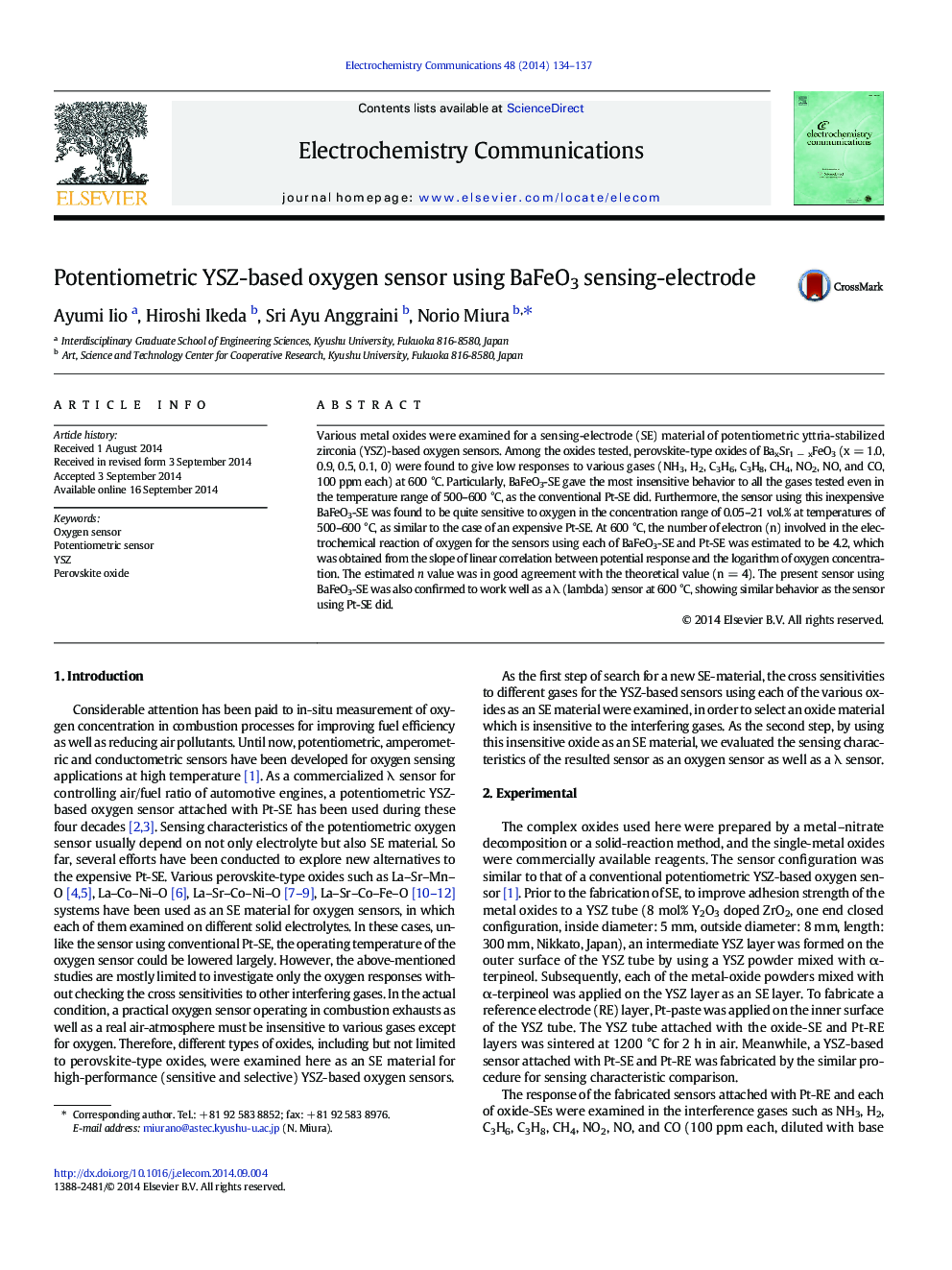| Article ID | Journal | Published Year | Pages | File Type |
|---|---|---|---|---|
| 6601420 | Electrochemistry Communications | 2014 | 4 Pages |
Abstract
Various metal oxides were examined for a sensing-electrode (SE) material of potentiometric yttria-stabilized zirconia (YSZ)-based oxygen sensors. Among the oxides tested, perovskite-type oxides of BaxSr1 â xFeO3 (x = 1.0, 0.9, 0.5, 0.1, 0) were found to give low responses to various gases (NH3, H2, C3H6, C3H8, CH4, NO2, NO, and CO, 100 ppm each) at 600 °C. Particularly, BaFeO3-SE gave the most insensitive behavior to all the gases tested even in the temperature range of 500-600 °C, as the conventional Pt-SE did. Furthermore, the sensor using this inexpensive BaFeO3-SE was found to be quite sensitive to oxygen in the concentration range of 0.05-21 vol.% at temperatures of 500-600 °C, as similar to the case of an expensive Pt-SE. At 600 °C, the number of electron (n) involved in the electrochemical reaction of oxygen for the sensors using each of BaFeO3-SE and Pt-SE was estimated to be 4.2, which was obtained from the slope of linear correlation between potential response and the logarithm of oxygen concentration. The estimated n value was in good agreement with the theoretical value (n = 4). The present sensor using BaFeO3-SE was also confirmed to work well as a λ (lambda) sensor at 600 °C, showing similar behavior as the sensor using Pt-SE did.
Related Topics
Physical Sciences and Engineering
Chemical Engineering
Chemical Engineering (General)
Authors
Ayumi Iio, Hiroshi Ikeda, Sri Ayu Anggraini, Norio Miura,
